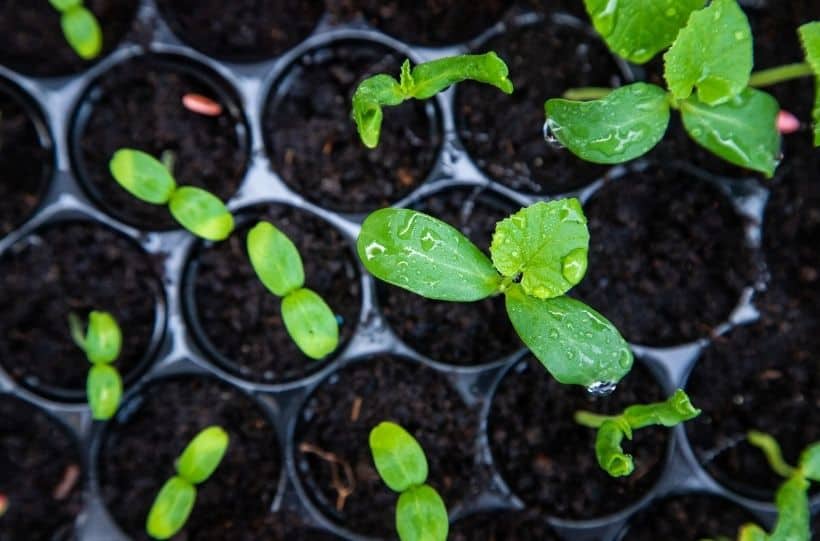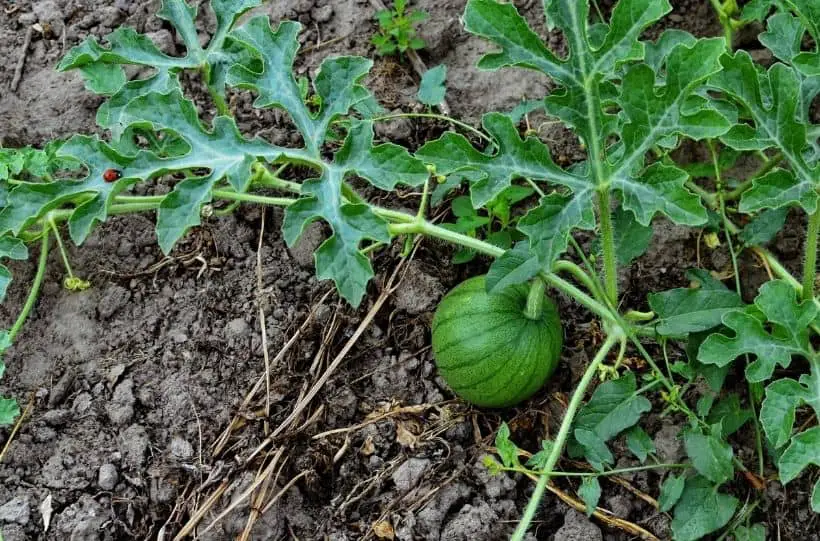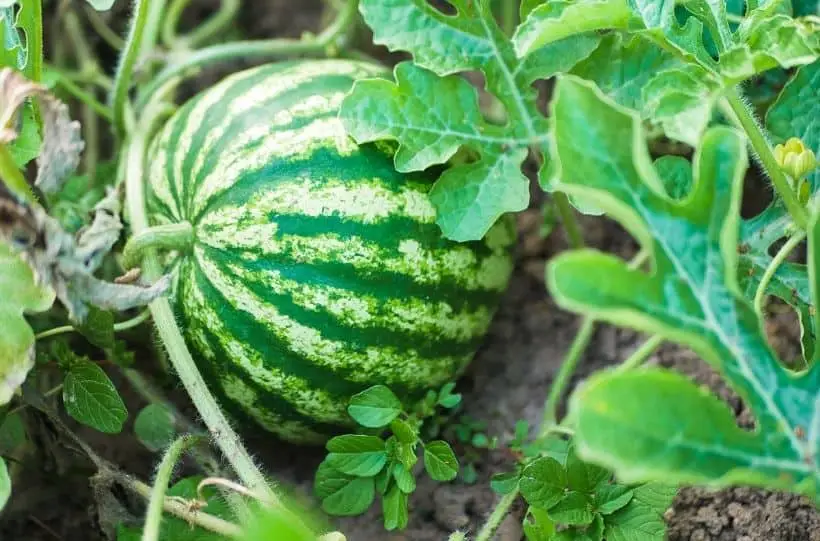How to Grow Watermelons in Your Garden
This post may contain affiliate links. Please see the privacy policy for details.
As far as fruit goes, there is no other fruit that speaks of summer more than watermelon. Its cool and unique flavor has become a summertime staple in households everywhere.
While watermelon is plentiful in grocery stores across the country, the taste of homegrown watermelon is unparalleled.
If you have never considered learning how to grow watermelon, you may change your mind once you see how simple it can be.

What are the Benefits of Watermelon?
One of the more apparent benefits of eating watermelon is its high water content. It is one of the few fruits that can help hydrate your body. The high water content is great for those who may not drink enough water throughout the day.
In addition, watermelon is very low in calories and rich in vitamins A, C, and B vitamins and minerals. More importantly, watermelon contains citrulline, an essential amino acid.
Where Does Watermelon Grow Best?
Watermelon loves both heat and sun and, as such, grows exceptionally well in the southern gardening zones where heat and humidity reign during the summer months.
However, it is possible to grow watermelon in the northern states. It does take more work to grow it in the north gardening zones; however, you can grow it successfully if you are willing to do the work.
If you are attempting to grow watermelon in a cooler climate, start your watermelon seeds indoors after the final frost for your area. Doing so will allow each plant to have a strong start before being transplanted outdoors into cooler temperatures.

Be sure you take the time to harden each plant before moving them outdoors permanently. Skipping the hardening step will cause your plants to wither and die off.
How to Plant Watermelon
Before planting your watermelon, it is best to plant seeds directly and do so in sandy loam soil. This is where they grow best.
The spot you plant them in also needs to be large. Watermelon grows on a vine and, as such, requires quite a bit of room. Your watermelon should be planted 2-3’ apart while allowing for 10-12’ between rows.
After your watermelon seeds are planted, watch the area closely for weeds. The site needs to be kept entirely weed-free. However, as you are weeding, be sure you do not disturb the roots, as doing so will harm your plants.
How to Water Watermelon Correctly
Watermelon needs to be watered quite often, especially as they are germinating and growing fruit. As watermelon typically grows during the hottest part of the summer, it can quickly become too dry.
A watermelon plant that is too dry can have fruit with stunted growth that ultimately shrivels and falls off the vine.

One other condition on watering watermelon is that it must be watered very deeply at ground level and not above the leaves and vines.
Watermelon is especially susceptible to powdery mildew, and watering from above increases this risk. As watermelon roots grow very deeply, you will need to water at least 6” deep to reach the longest parts of the root.
Because of this disease risk, it is best not to use a sprinkler system to water watermelon. If you can not water your plants by hand, it is best to use drip irrigation. This will help to minimize the risk to the leaves and vines.
How to Harvest Watermelon
Watermelon takes approximately 120 days to fully mature when planted from seed. This long growing season can make it hard to determine when it is time to harvest your watermelon. Luckily, there are a few things you can do to determine how ripe your watermelon is.
First, watermelon vines grow curly tendrils on them. When your plants are close to maturity, these tendrils will turn brown and dry out.
This can be an effective way for you to know when it is time to check for other signs of watermelon being ready to harvest. Once you notice the tendrils have browned, check the color of the fruit itself. When ready to harvest, it will change from bright green to dull green.
You can also test for maturity by inspecting the watermelon rind. It should be thick and firm enough that you are not able to puncture it with your fingernail.
Finally, another simple way to check if the watermelon is ripe is to flip the fruit over. When ripe watermelon sits in one spot too long, the outside rind will turn yellow. While this is not a guarantee of maturity, it is a good sign that your plant is ready to harvest.
Using Your Fresh Watermelon
Watermelon is a refreshing summer fruit that can be eaten on its own or in many different ways – in a fruit salad for breakfast, as an afternoon snack with friends, or later in the day as an appetizer before dinner.
Some of the most popular watermelon recipes include watermelon margaritas and watermelon sorbet.

Growing watermelon might seem difficult; however, it is one of the easiest fruits to grow.
As long as you have the space necessary, it is the perfect addition to any garden. Given that the watermelon plant itself does most of the work, it is ideal for new and experienced gardeners alike.
Looking for more on melons, take a look at these posts:
